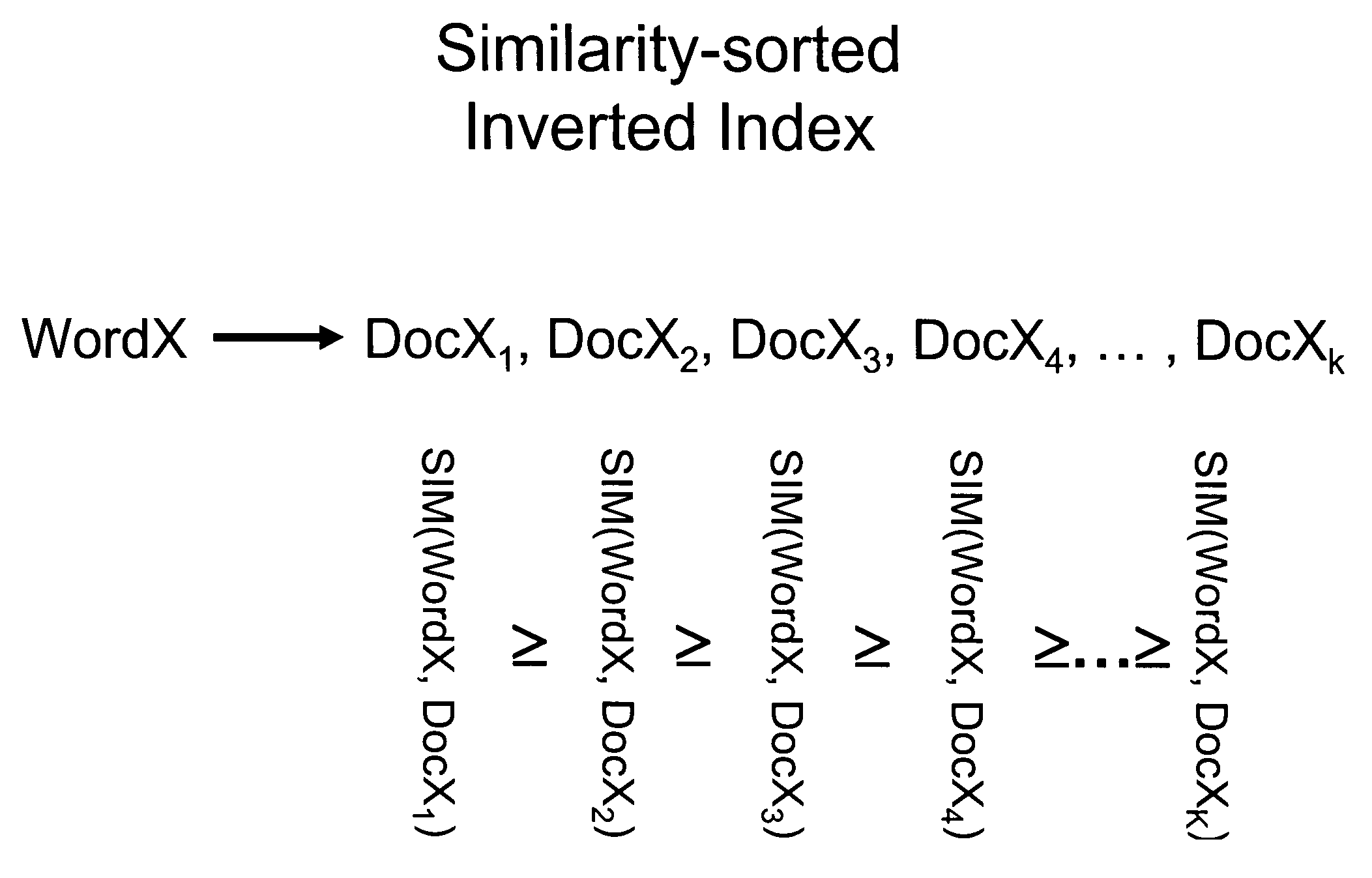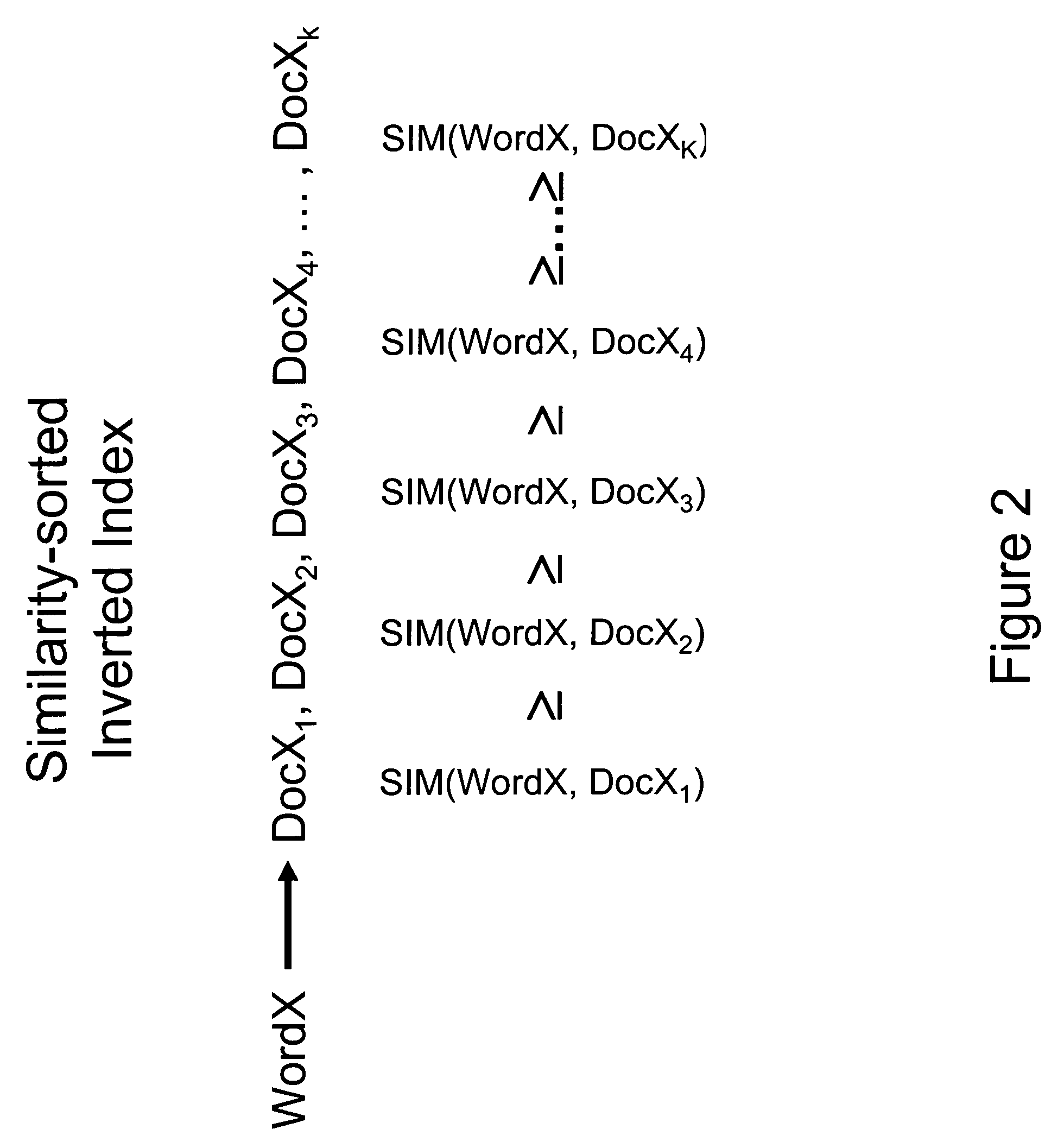Document similarity scoring and ranking method, device and computer program product
a similarity scoring and ranking technology, applied in the field of document similarity scoring and ranking method, device and computer program product, can solve the problems of unattainable goal for large document set, non-conventional step, and inability to cope with computational burden engendered, so as to avoid large, avoid waste of computational effort, and achieve small similarity scores.
- Summary
- Abstract
- Description
- Claims
- Application Information
AI Technical Summary
Benefits of technology
Problems solved by technology
Method used
Image
Examples
Embodiment Construction
Calculating Similarity Scores Among a Set of Documents.
[0045]The method of the present invention begins with calculating similarity scores among a set of documents. This includes the following steps:[0046]1. Constructing a word corpus from the document set.[0047]2. Constructing an inverted index, based on the corpus and on the document set.[0048]3. For each word in the index:[0049]a. Calculating a word similarity score between the index word and each of the documents in which the word appears.[0050]b. Sorting the document IDs in decreasing order of word similarity.[0051]c. Truncating the sorted list of document IDs. This is accomplished by enforcing a word threshold τword—that is, by discarding documents with word similarity scores less than the word threshold. The resulting truncated, sorted list is termed the index-word document list.[0052]d. Performing the following operations on the documents in the index-word document list, in order of decreasing word similarity:[0053]i. For ea...
PUM
 Login to View More
Login to View More Abstract
Description
Claims
Application Information
 Login to View More
Login to View More - R&D
- Intellectual Property
- Life Sciences
- Materials
- Tech Scout
- Unparalleled Data Quality
- Higher Quality Content
- 60% Fewer Hallucinations
Browse by: Latest US Patents, China's latest patents, Technical Efficacy Thesaurus, Application Domain, Technology Topic, Popular Technical Reports.
© 2025 PatSnap. All rights reserved.Legal|Privacy policy|Modern Slavery Act Transparency Statement|Sitemap|About US| Contact US: help@patsnap.com



